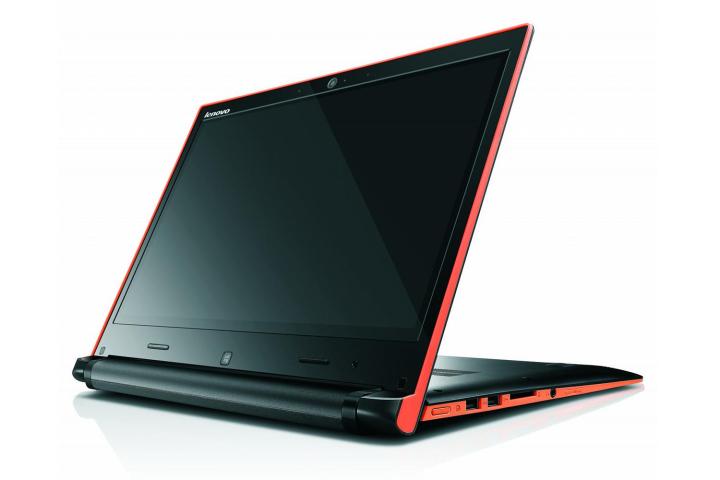
Sometimes products are created not by adding features, but taking some away. Such is the case with the Flex 14 and 15 from Lenovo, a pair of new laptops built off the Yoga’s hinge, but slightly downgraded so that rotation is limited to 300 degrees. This means the systems can’t be used as a tablet, but the keyboard can be used as a stand, converting the Flex into a touch-only experience.
As the names imply, these systems will be available in 14.1- and 15.6-inch variants. Both offer a standard 1,366 x 768 display with an optional 1080p upgrade, 10-point touch, Intel Core processors and optional Nvidia GT 740M discrete graphics. Up to one terabyte of storage can be added or, alternatively, customers can choose from a selection of speedy SSD and NAND hard drives. Lenovo is quoting up to nine hours of battery life with the display at a generous brightness of 150 nits.
As you might expect, sacrificing the 360-degree hinge also lowers the price. Flex laptops will start at $629, which is about $180 less than the current Yoga 13 and almost half the price of the Yoga 2, which was also announced at IFA.

Lenovo is also getting into the gigantic tablet game with the Flex 20. Though the company has already explored table-tablet territory with its 27-inch IdeaCentre Horizon, the smaller Flex brings the same ideas to a more compact form-factor with an affordable $829 price tag. As with the Flex laptops, availability is promised for late September.
The Flex 20 boasts a 20.5mm chassis (slimmer than some Ultrabooks) and a 19.5-inch, 1,600 x 900 IPS display that can tilt 90 degrees during desktop use. Storage options mechanical hard drives and solid state storage, and Core i7 processors will be available.
Of course, the real ace up this system’s sleeve is ability to convert to tablet mode. This is a trait other competitors, like the Rove 20, already offer, but Lenovo hopes to stand out from the crowd with its unique Aura touch interface and optional gaming peripherals, such as joysticks and e-dice. We liked these features on the Horizon, but found the system too expensive to justify such novelties; perhaps the Flex 20’s lower price point will change our tune.



